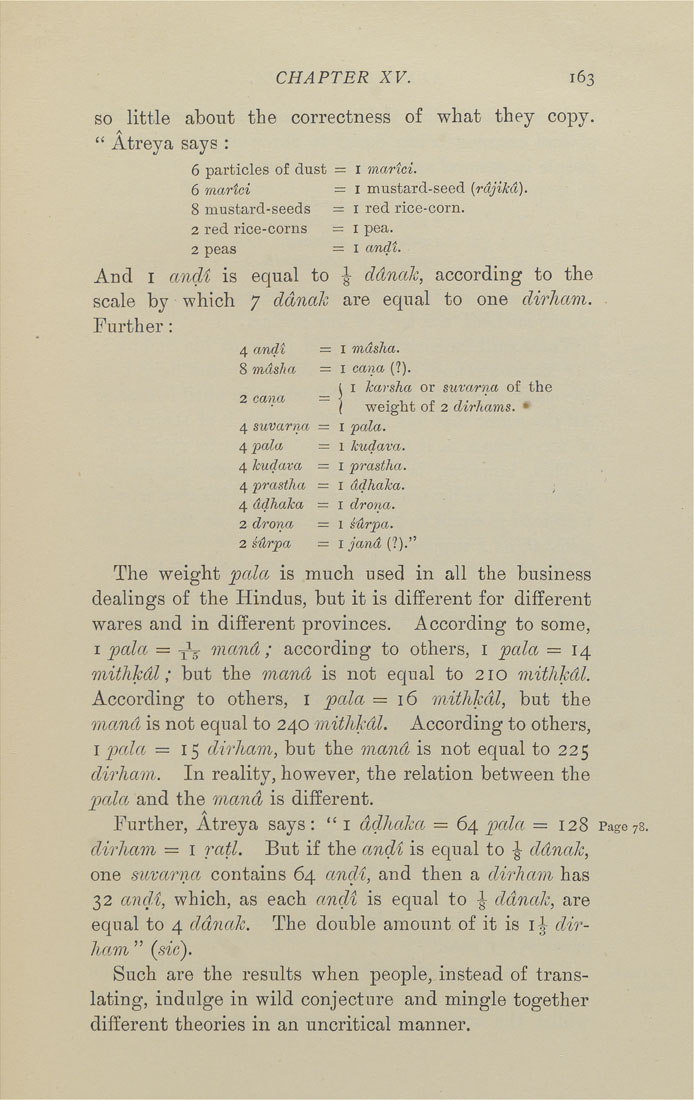Bīrūnī, Muḥammad ibn Aḥmad, Alberuni's India (v. 1)
(London : Kegan Paul, Trench, Trübner & Co., 1910.)
|
||
|
|
|
|
| Page 163 |

CHAPTER XV.
163
SO little about the correctness of what they copy.
" Atreya says :
6 particles of dust = i marici.
6 martci = i mustard-seed {rdjikd).
8 mustard-seeds = i red rice-corn.
2 red rice-corns — i pea.
2 peas = I andt.
And I audi is equal to | ddnak, according to the
scale by
which 7 ddnt
ik
are equal to one dirl
Further :
4 andt
=
I mdsha.
8 mdsha
-
I cana (?).
I I karsha or suvarna of the
2 cana
~
( weight of 2 dirhams. •
4 suvarna
=
I po-Za.
4 pala
=
I kudava.
4 kudava
=
I prastha.
4 prastha
=
I ddhaka.
4 ddhaka
=
I drona.
2 drona
=
1 surpa.
2 s4rpa
=
I j^'area (?)."
The weight j?a/a is much used in all the business
dealings of the Hindus, but it is different for different
wares and in different provinces. According to some,
I pala = yV mand; according to others, i pala = 14
mithkdl; but the m-and is not equal to 210 mithkdl.
According to others, i pala — 16 mithkdl, but the
mand is not equal to 240 mithkdl. According to others,
I pala =15 dirham, but the mand is not equal to 225
dirham. In reality, however, the relation between the
pala and the mand is different.
Further, Atreya says: " i ddhaka = 64 pcda = 128 Page:
dirham = i rati. But if the audi is equal to ^ ddnak,
one suvarna contains 64 ancli, and then a dirham has
32 ancli, which, as each ancli is equal to ^ ddnak, are
equal to 4 ddnak. The double amount of it is i-J- dir¬
ham " (sic).
Such are the results when people, instead of trans¬
lating, indulge in wild conjecture and mingle together
different theories in an uncritical manner.
|
| Page 163 |







